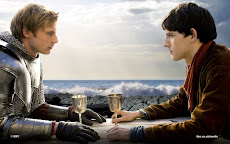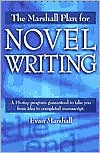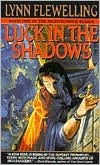 Perhaps it doesn't sound quite as glamorous as the "Bucket List", but for novel writing the "But List" is a very useful tool. It's a slimmed-down version of the "Goal, Complication, Result" list that many of us use -- a way to keep track of conflict. Mine is a table with just four columns: INDEX, POV, WANTS/NEEDS and "BUT".
Perhaps it doesn't sound quite as glamorous as the "Bucket List", but for novel writing the "But List" is a very useful tool. It's a slimmed-down version of the "Goal, Complication, Result" list that many of us use -- a way to keep track of conflict. Mine is a table with just four columns: INDEX, POV, WANTS/NEEDS and "BUT".In the INDEX column, I keep track of which scene I'm referring to. I use a three-digit format: act, chapter, scene. The chapters are continuous, but the scene numbers are restarted at "1" for each chapter. For Act III, Chapter 27, Scene 2, the notation is: 3-27-2. Easy and quick.
The POV column contains just the name of the POV character for the given scene. Again, easy and quick.
The WANTS/NEEDS column contains the POV character's main goal for the scene. It is something the character wants or needs. I use WANTS/NEEDS instead of GOAL as the heading for this column because it feels more immediate, more real. People don't think in terms of goals; they think in terms of what they want or need at any given moment. Goals exist, of course, but we only think of them as such in certain contexts. I like to be reminded that characters are driven by wants and needs, rather than just goals, which sound too impersonal as a source of motivation.
Finally, the "BUT" column contains the complication, whatever happens that stands in the way of true happiness. For example, if a character wants to buy an ice cream cone, then the "BUT" column might contain: "The store is closed." No true happiness there! Or, if the character will buy the ice cream cone, then it must be something else, such as: "Cashier remarks it's fattening." So, the POV character reaches the goal, but finds reason to regret it. Hmm, maybe I'll keep that in mind the next time I go shopping for ice cream!
The "But List" helps me focus my scenes to ensure they are goal-driven, rather than just a bunch of stuff that sort of happens to characters who just seem to show up at some place. It also helps me maintain a sense of conflict.
The general advice is that every scene must contain conflict, and I strive for that, but I've read plenty of scenes by successful authors and found very little outright conflict in them (the scenes, not the authors). I like it when sometimes things do work out okay for a character. It's a welcome relief from the constant pressure. It creates a happy moment and a release of tension, usually just before some major complication comes along and ruins things yet again. I know other writers and aspiring writers also share this view, that not every scene has to be pumped full of conflict, despair and broken dreams. The plot can move forward in other ways, such as a character learning information while having a good time.
In fact, I just read such a scene in the second Nightrunner novel (by Lynn Flewelling). Seregil had a romantic encounter that was enjoyable and he got some new information to spur him on. Perhaps the only conflict was that he would have liked to have stayed longer, but that sentiment wasn't expressed. He had his fun and now he's off for another adventure! Works for me (as a reader of this scene; actual lifestyle choices are another topic).
I was afraid in looking back over my current WIP that I might find the scenes were too lacking in goals and complications. I was pleased to find that only a handful of scenes needed any tweaking, and the adjustments are minor. My effort to keep goals and conflict in mind as I write has paid off. It's becoming second nature.
Well, I'm off to work more on my "But List", and solve some antagonist issues that are holding things up -- not altogether unexpected behavior for an antagonist.
Adrian
Off-Color After-Thought: In the spirit of the "Bucket List", an actual "Butt List" does sound intriguing....








No comments:
Post a Comment